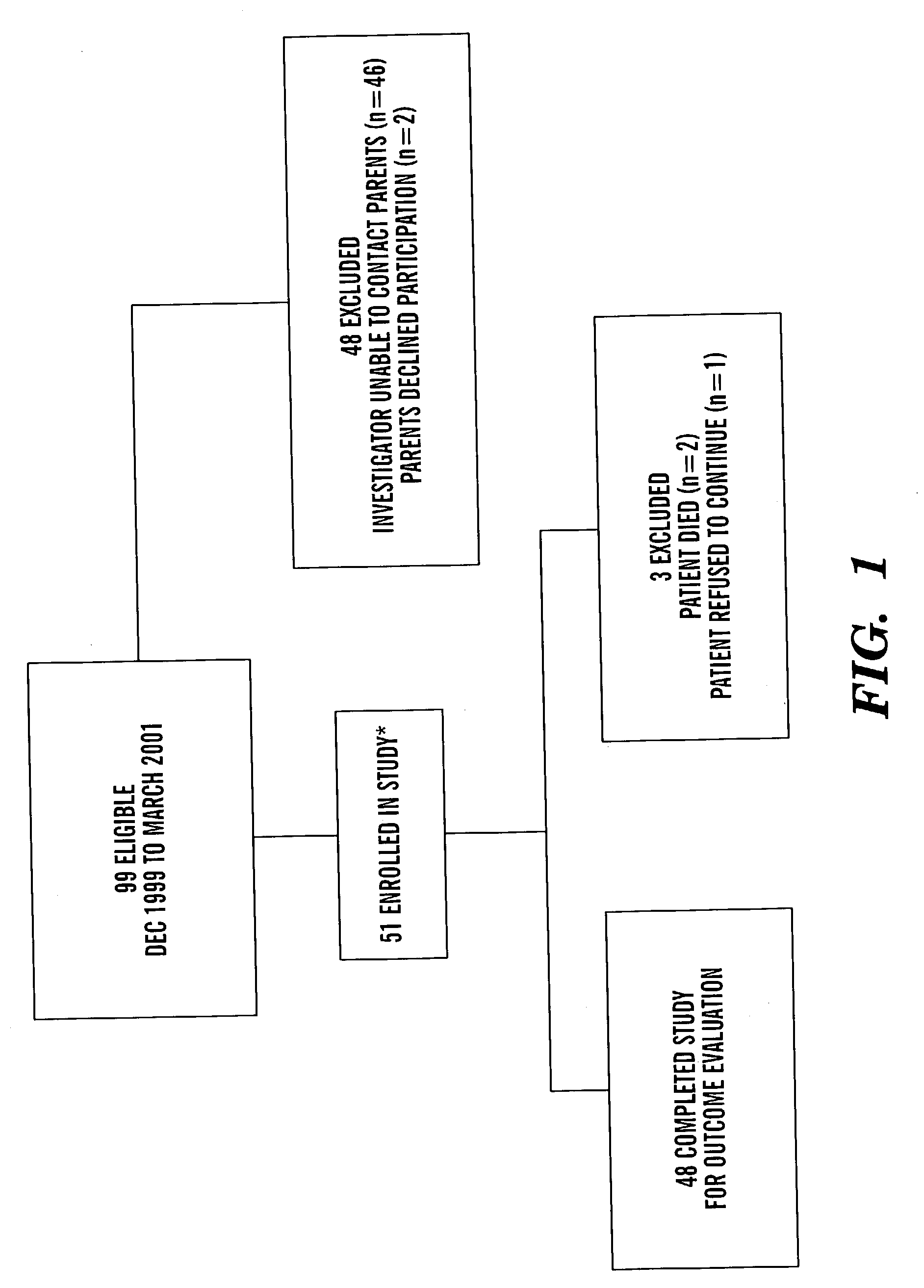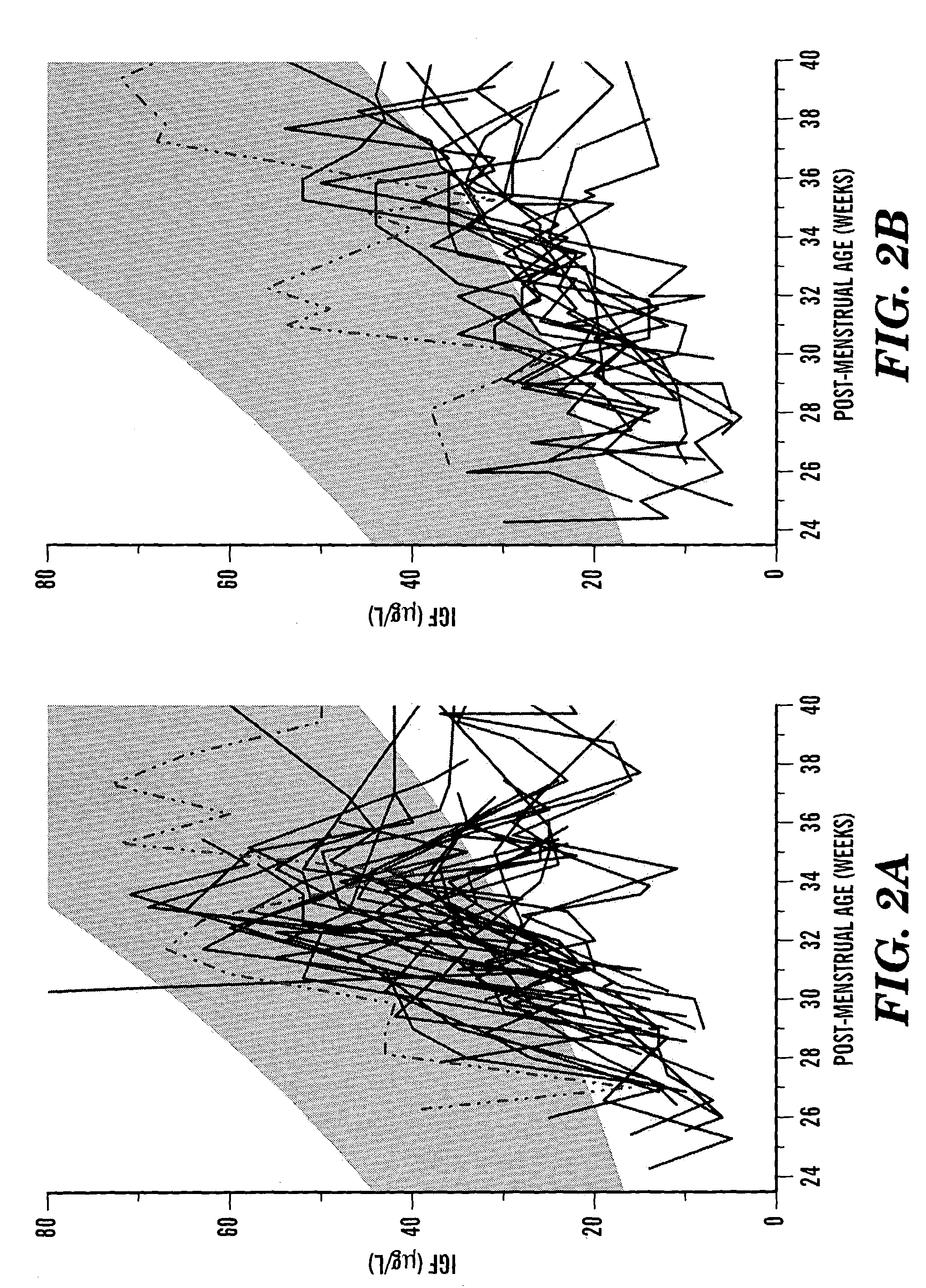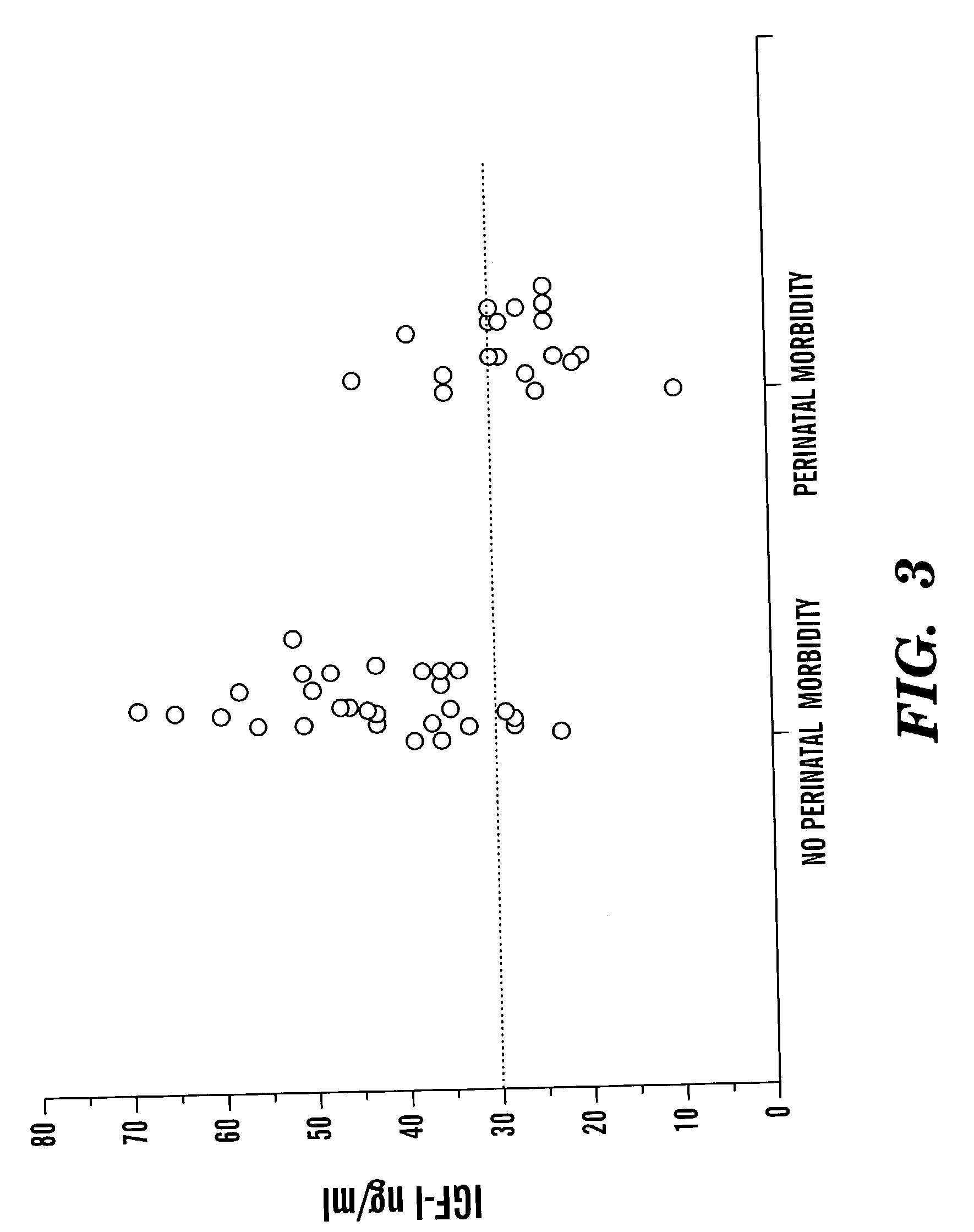Determination of risk and treatment of complications of prematurity
a technology of prematurity and risk, applied in the direction of depsipeptides, packaging goods types, peptide/protein ingredients, etc., can solve the problems of imposing a heavy burden on the national economy, and affecting the quality of life of many survivors
- Summary
- Abstract
- Description
- Claims
- Application Information
AI Technical Summary
Benefits of technology
Problems solved by technology
Method used
Image
Examples
example 1
Study Subjects
[0064]All eligible patients were at high risk of developing ROP and other morbidity on the basis of their postmenstrual ages at birth. All infants born at a post-menstrual age of less than 32 weeks at The Queen Silvia Children's Hospital in Göteborg between December 1999 and May 2001 were eligible for the study. Exclusion criteria were inability to complete postnatal clinical follow-up until an age corresponding to 40 post-menstrual weeks and any conspicuous congenital anomaly.
[0065]Ninety-nine eligible babies were born at The Queen Silvia Children's Hospital, Göteborg between December 1999 and May 2001. Forty-eight infants were excluded because the investigator was unable to contact the parents in time to initiate the study (FIG. 1). The mean post-menstrual age at birth among the excluded children was 30 weeks; no child in this group had a post-menstrual age at birth of less than 27 weeks. Fifty-one infants were identified as potential participants in the study. The p...
example 2
Measurement of Vessel Growth in IGF-1 Knockout Mice
[0077]These studies adhered to the ARVO Statement for the Use of Animals in Ophthalmic and Vision Research. IGF-I null mice (IGF-I− / −) were generated through inbreeding mice carrying heterozygous IGF-I-flox+ / − (L / −) on a mixed C57 / 129sv background. See, Liu, J. L. & LeRoith, D. (1999) Endocrinology 140, 5178–84. Born as dwarfs with severe developmental deficiency, only 40% of the few born survived postnatal life. Their littermates, L / L or L / − were virtually identical and normal. Genotyping using PCR and Southern blot analysis on tail DNA samples were performed as previously reported. See, Liu, J. L., Grinberg, A., Westphal, H., Sauer, B., Accili, D., Karas, M. & LeRoith, D. (1998) Mol Endocrinol 12, 1452–62. At post-natal day 5, 5 IGFI− / − and 6 IGF1+ / + sibling mice were sacrificed and eyes were isolated, then fresh frozen in OCT and serially sectioned (8 μm). Thirty sections were made through the pupil and optic nerve and blood vess...
PUM
| Property | Measurement | Unit |
|---|---|---|
| molecular weight | aaaaa | aaaaa |
| concentration | aaaaa | aaaaa |
| concentration | aaaaa | aaaaa |
Abstract
Description
Claims
Application Information
 Login to View More
Login to View More - R&D
- Intellectual Property
- Life Sciences
- Materials
- Tech Scout
- Unparalleled Data Quality
- Higher Quality Content
- 60% Fewer Hallucinations
Browse by: Latest US Patents, China's latest patents, Technical Efficacy Thesaurus, Application Domain, Technology Topic, Popular Technical Reports.
© 2025 PatSnap. All rights reserved.Legal|Privacy policy|Modern Slavery Act Transparency Statement|Sitemap|About US| Contact US: help@patsnap.com



